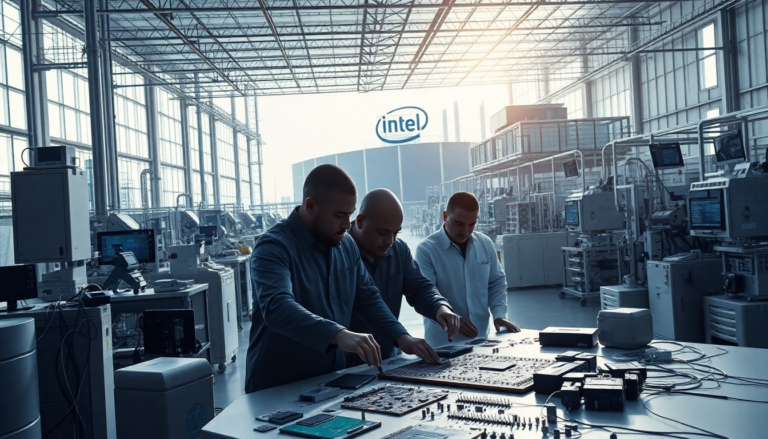Argomenti trattati
In a significant move for the U.S. technology landscape, the government has decided to purchase a stake in Intel, one of the leading semiconductor manufacturers. This investment, totaling around $8.9 billion, underscores the government’s commitment to strengthening the domestic semiconductor industry. With Intel playing a vital role in advancing national priorities, this transaction not only reflects confidence in the company but also highlights the strategic importance of U.S. manufacturing capabilities in technology.
Overview of the Investment
Intel announced that the U.S. government will acquire about 9.9% of its common stock, purchasing approximately 433.3 million shares at a price of $20.47 each. Interestingly, this price is significantly lower than the market value, which closed at $24.80 on the day of the announcement. The funding for this investment comes from grants previously allocated to Intel under the CHIPS and Science Act, aimed at enhancing American semiconductor production. This financial backing is a crucial step in maintaining the U.S.’s technological leadership and economic security in an increasingly competitive global market.
This investment isn’t a standalone effort; it’s part of a larger strategy to ensure that the U.S. stays at the forefront of semiconductor technology amid rising competition from global players, especially in Asia. As Intel’s CEO, Lip-Bu Tan, has pointed out, focusing on U.S. chip manufacturing is essential for advancing the nation’s economic and national security interests. Isn’t it fascinating how one investment can ripple through an entire industry?
Strategic Implications for the Semiconductor Industry
The implications of this investment are multifaceted. By acquiring a stake in Intel, the government not only injects much-needed capital into the company but also reinforces its role as a leader in semiconductor research and development. This partnership aims to foster innovation and expand the domestic supply chain, which is critical for national security and economic resilience. How often do we see governments taking such bold steps to secure their technological futures?
Moreover, this move is indicative of a broader trend where government entities are increasingly recognizing the importance of investing in key industries. The semiconductor sector has been pinpointed as vital due to its foundational role in a wide array of technologies, from consumer electronics to defense systems. This partnership is expected to stimulate further investments from private sectors as well, creating a ripple effect within the industry. Could this be the dawn of a new era for semiconductor manufacturing in the U.S.?
Future Outlook and Opportunities
Looking ahead, the government’s investment in Intel could unlock significant opportunities for growth and development within the semiconductor industry. With Intel receiving substantial support, it is well-positioned to ramp up production capabilities and innovate new technologies. The emphasis on domestic manufacturing is likely to attract additional investments from both public and private sectors, ultimately enhancing the competitiveness of U.S. firms on the global stage.
This investment also raises expectations for other companies in the semiconductor space, such as TSMC and Micron, who may feel inspired to boost their own domestic operations in response to government incentives. As the landscape evolves, investors should stay vigilant about how these dynamics unfold and the potential for new market entrants or collaborations that may arise from this governmental push. Are you ready to explore the possibilities?
Ultimately, this strategic investment not only strengthens Intel but also marks a significant milestone in the U.S. government’s efforts to secure its technological future. As the semiconductor industry continues to evolve, stakeholders across the board must navigate the opportunities and challenges that arise in this critical sector. Will this investment pave the way for a robust semiconductor ecosystem in the U.S.?

